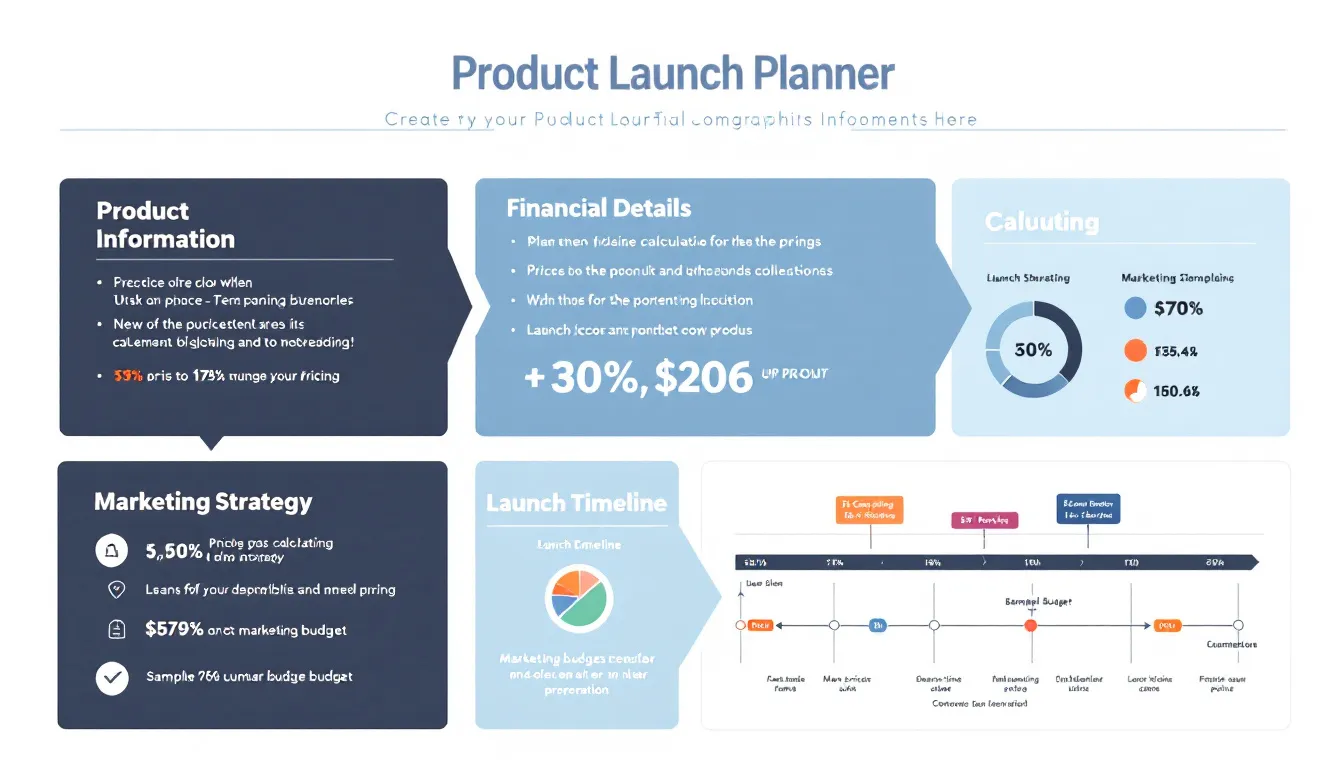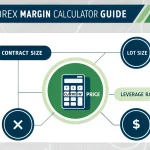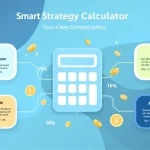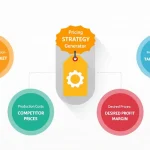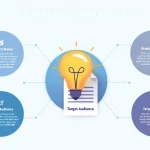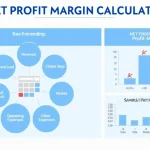Is this tool helpful?
How to Use the Product Launch Planner Tool Effectively
This Product Launch Planner Tool is designed to simplify the process of strategizing your product introduction. To make the most out of this tool, carefully fill in each field with detailed, thoughtful information. Here’s a step-by-step guide on how to input your data effectively:
-
Product Information:
- Enter the name of your product. Example: “SolarSaver Max”
- Provide a concise description highlighting the product’s features. Example: “SolarSaver Max is a portable solar charger with rapid charging and weather-resistant design.”
- Specify your target audience including demographics and interests. Example: “Outdoor enthusiasts and eco-conscious travelers aged 18-40.”
-
Financial Details:
- Enter the cost to produce or procure one unit of your product in USD. Example: 120.00
- Define your desired profit margin as a percentage. Example: 25%
-
Marketing Information:
- Set the total budget planned for marketing activities in USD. Example: 15,000
- List preferred marketing channels that best reach your audience. Example: “Content marketing, podcasts, affiliate programs”
-
Launch Details:
- Select the launch date for your product.
- Specify the type of launch event or campaign. Example: “Hybrid webinar plus social media blitz”
-
Post-Launch Evaluation:
- Outline how you plan to evaluate launch success. Example: “Monitor app downloads, customer feedback surveys, engagement analytics.”
- Generate Your Plan: Finally, submit the form to generate a tailored product launch strategy that aligns with your specific goals.
Introducing the Product Launch Planner Tool: Definition, Purpose, and Benefits
Launching a new product requires detailed planning, insightful strategy, and efficient execution. The Product Launch Planner Tool is a comprehensive solution crafted to guide businesses in crafting a seamless, data-driven product launch plan. Whether you are a startup introducing a tech innovation or an established company rolling out a new product line, this tool helps you map out every essential component.
What Is the Product Launch Planner Tool?
This dynamic digital assistant streamlines the product launch process by integrating key elements such as market research, financial forecasting, and marketing strategy development into a unified framework. It helps remove uncertainty and provides actionable insights that are tailored to your product’s unique characteristics and target market.
Purpose and Core Benefits
- Create a compelling value proposition that resonates with your target customers and clearly differentiates your product.
- Formulate an effective pre-launch marketing strategy that builds anticipation and engages your audience early on.
- Develop precise pricing models that balance profit goals with competitive positioning.
- Construct detailed launch timelines to ensure every phase is executed on schedule.
- Plan impactful launch events or campaigns to maximize brand exposure and customer engagement.
- Implement thorough post-launch evaluation processes to measure success and identify improvement areas.
Practical Usage and Example Calculations
Though the Product Launch Planner Tool functions through a streamlined form submission system, it leverages foundational financial models within the backend calculations for your benefit. Below are examples of the types of computations involved in crafting your launch plan:
Pricing Strategy Calculation
To determine a product’s selling price, the tool uses a cost-plus pricing formula:
$$ \text{Selling Price} = \text{Product Cost} + (\text{Product Cost} \times \text{Desired Profit Margin}) $$For instance, if your product costs $120 to make and you want a 25% profit margin:
$$ \text{Selling Price} = 120 + (120 \times 0.25) = 150 $$Break-Even Point Analysis
The break-even point determines how many units you need to sell to cover fixed costs. It’s calculated as:
$$ \text{Break-Even Point (Units)} = \frac{\text{Fixed Costs}}{\text{Selling Price} – \text{Variable Cost per Unit}} $$If your fixed costs are $40,000, selling price is $150, and variable cost per unit is $20:
$$ \text{Break-Even Point} = \frac{40,000}{150 – 20} = \frac{40,000}{130} \approx 308 \text{ units} $$Marketing Budget Allocation
To optimize your marketing spend across channels, you can allocate percentages of your total budget. For example, allocating 50% of a $15,000 marketing budget to influencer marketing:
$$ \text{Influencer Marketing Budget} = 15,000 \times 0.50 = 7,500 $$Customer Metrics: Acquisition Cost and Lifetime Value
Understanding customer acquisition cost (CAC) and customer lifetime value (CLV) helps gauge long-term profitability. These are calculated as follows:
$$ \text{CAC} = \frac{\text{Total Marketing Expenses}}{\text{Number of New Customers Acquired}} $$$$ \text{CLV} = \text{Average Purchase Value} \times \text{Purchase Frequency} \times \text{Customer Lifespan} $$For example, with $15,000 spent on marketing acquiring 300 customers:
$$ \text{CAC} = \frac{15,000}{300} = 50 $$And if average purchase value is $150, purchase frequency is 1.5 times a year, and customer lifespan is 4 years, then:
$$ \text{CLV} = 150 \times 1.5 \times 4 = 900 $$These insights enable you to balance marketing spend against expected revenue per customer.
Real-World Applications and Industry Use Cases
Use Case 1: SaaS Company Launching Subscription Software
A SaaS startup plans to launch a project management tool aimed at freelancers. They input:
- Product Name: “FlowTask Suite”
- Product Cost: $8 monthly user-based server expenses
- Profit Margin: 70%
- Fixed Costs: $60,000 (development and administration)
- Marketing Budget: $30,000
- Target Audience: “Freelancers and solo entrepreneurs in creative industries, aged 22-40”
The tool suggests a pricing of $13.60 per month with a multi-phase launch campaign emphasizing webinars, referral programs, and social media engagement. A detailed timeline includes beta testing and a product demo series.
Use Case 2: Retail Brand Launching Sustainable Apparel Line
An established fashion retailer is introducing an eco-friendly clothing collection. Their inputs include:
- Product Name: “EcoThreads Collection”
- Product Cost: $25 per garment
- Profit Margin: 50%
- Fixed Costs: $150,000 (design, manufacturing setup)
- Marketing Budget: $70,000
- Target Audience: “Environmentally conscious consumers, ages 25-45”
The tool recommends a competitive retail price of $37.50 and prioritizes influencer collaborations, social justice campaigns, and pop-up shop launch events. It also outlines post-launch customer surveys and sales analytics for continuous improvement.
Frequently Asked Questions (FAQ)
Q1: How does the Product Launch Planner Tool create a personalized launch plan?
The tool personalizes your launch strategy by analyzing your specific inputs—like product details, financial data, and marketing preferences—to generate customized recommendations tailored to your market conditions and business goals.
Q2: Can this tool be used for launching digital services or only physical products?
Yes, the Product Launch Planner Tool is designed to support both physical products and digital services. For services, you can enter relevant cost details such as development and operational expenses to receive appropriate pricing and launch guidance.
Q3: How does the tool help manage launch timelines?
While the tool generates comprehensive launch plans, it includes recommendations for scheduling key milestones like pre-launch marketing, event execution, and post-launch review phases. This helps keep your team on track for a smooth rollout.
Important Disclaimer
The calculations, results, and content provided by our tools are not guaranteed to be accurate, complete, or reliable. Users are responsible for verifying and interpreting the results. Our content and tools may contain errors, biases, or inconsistencies. Do not enter personal data, sensitive information, or personally identifiable information in our web forms or tools. Such data entry violates our terms of service and may result in unauthorized disclosure to third parties. We reserve the right to save inputs and outputs from our tools for the purposes of error debugging, bias identification, and performance improvement. External companies providing AI models used in our tools may also save and process data in accordance with their own policies. By using our tools, you consent to this data collection and processing. We reserve the right to limit the usage of our tools based on current usability factors.
